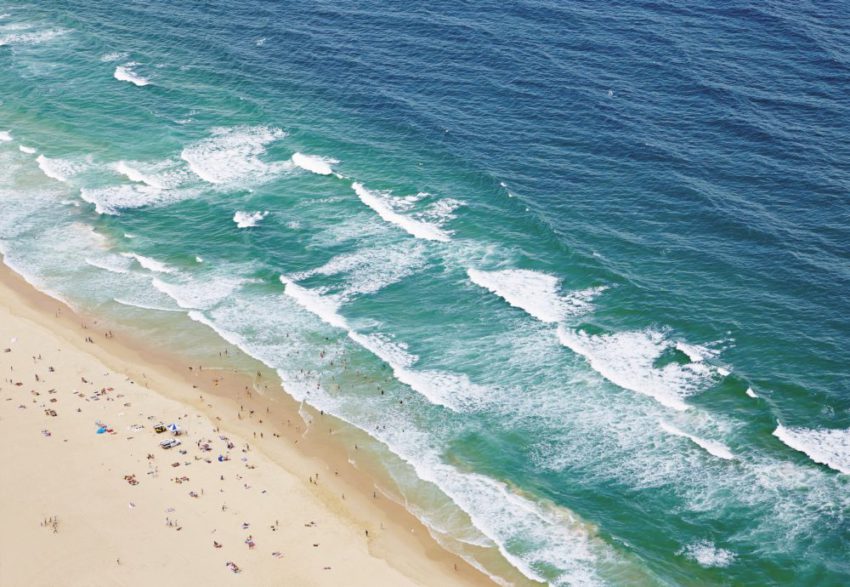On his travels around the world surfing and building boats, Turton was shocked by the amount of rubbish he saw floating in the world’s waterways. Over a beer with his friend Ceglinski, he asked: “If we have rubbish bins on land, why don’t we have rubbish bins for the ocean?” This simple question sparked the development of the Seabin, an innovative, world-first invention that is attracting global attention for its potential to help clean the ocean and revolutionise the health of marine ecosystems around the world. Similar to a skimmer box in a swimming pool, the Seabin is an automated rubbish bin that collects floating rubbish, oil, fuel and detergents. It is designed for marinas, private pontoons, inland waterways, residential lakes, harbours, ports and yacht clubs.
World Demand
Based in Perth, Western Australia, Turton and Ceglinski spent four years designing a prototype of the Seabin, with seed funding from Australian company Shark Mitigation Systems. In late 2015, they launched the project on crowdfunding site Indiegogo. The campaign raised more than US$260,000 in two months and was supported by ocean lovers from around the world.
In March 2016, Seabin announced an exclusive partnership with Poralu Marine, a French manufacturer of pontoons and marina equipment, to develop, manufacture and distribute the Seabins to customers worldwide.
The resort town of La Grande Motte became the first port in France to sign a collaborative research and development agreement with Seabin. Manufacturing of Seabins is due to start in September 2016. The first commercial Seabin was installed at a marina in Portsmouth, UK, home to Britain’s America’s Cup sailing team at the end of 2016.
A Second Life for Rubbish
One of the challenges the Seabin team is addressing is what to do with all the rubbish the bins collect. The amount of waste in the ocean and waterways is overwhelming. “We only see 30 per cent of the rubbish in the ocean,” says Ceglinski. “Seventy per cent of it sinks. We’ve worked out that if we collect one kilogram of rubbish per day, we’ll end up with nearly half a tonne of plastic at the end of the year – and that’s just from one Seabin.”
To help address the problem, Seabin is partnering with Parley for the Oceans, a New York-based environmental group that will recycle the plastics collected by the Seabins to make other products. Parley for the Oceans has previously worked with Adidas to create shoes made from plastic collected from the ocean. Turton and Ceglinski are also investigating how to use recycled ocean plastics to produce the body of the bins, making them more sustainable.
From Marinas to the Ocean
Both Ceglinski and Turton are avid surfers who grew up in Byron Bay, New South Wales, Australia. Turton is a boat builder and sailor, while Ceglinski started his career in industrial design before moving to the yachting industry. When they thought it was “time to get serious” about the Seabin, they quit their jobs and set up a workshop on the Spanish island of Mallorca – there are about 2,000 marinas within a one-hour flight.
Their first goal is to have Seabins installed in marinas worldwide. Marinas have caretakers, who will be able to collect the rubbish. “It will make these marinas more efficient,” says Ceglinski. “It means the workers won’t have to spend six hours scooping out plastic and rubbish from the water each day. They can just empty the Seabin once or twice.”
The latest test version of the Seabin relies on electricity to run its pumps. But the team is working to develop a model that harnesses the energy of the sun to filter the water. The next stage of development will be to get the bins into channels and bays. Finally, the men want to see them in the ocean, but Ceglinski says they still have some work to do before battling the full force of Mother Nature.
Despite creating a product that has won worldwide attention, Ceglinski says they don’t want to have Seabins in the future. “We shouldn’t have a need for them,” he says. The men want to link education programs to young people with Seabins in their area. They hope that by creating awareness about pollution, the younger generations will become leaders of drastic, positive change.
n"}”>www.australiaunlimited.com. The unedited version of this article is also available on the website of Business Events Australia here.Author: Imogen Brennan / Photo: Gold Coast, QLD © Tourism Australia
